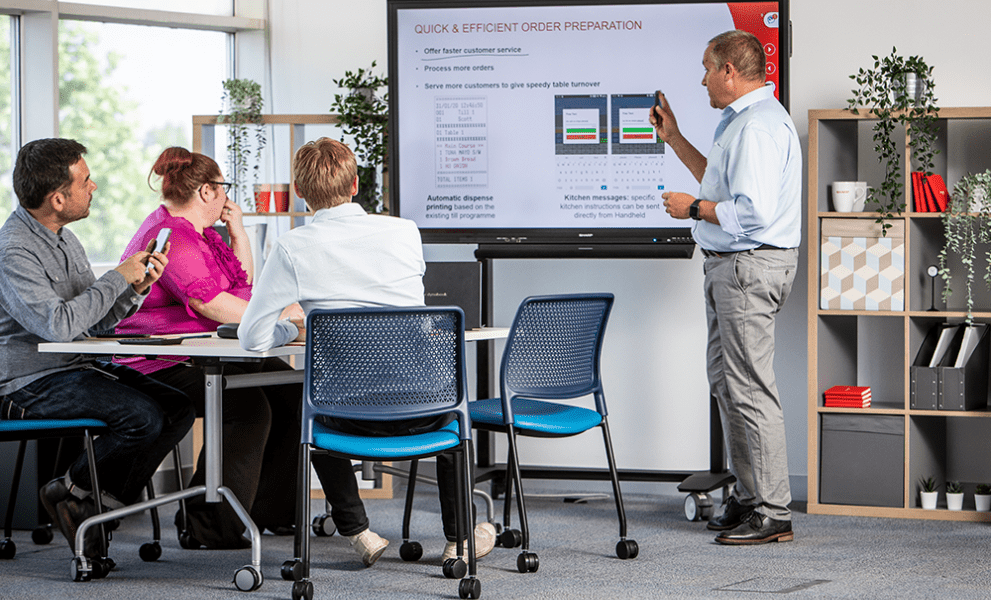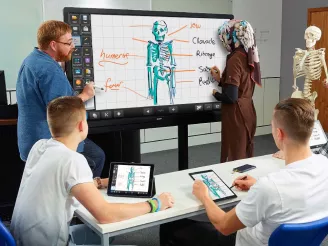Interactive Whiteboards
What are interactive whiteboards?
We’re all familiar with the traditional whiteboards used in lessons and business meetings - the dry-wipe solution for presentations and pitching, used with projectors to deliver content.
While they are still useful in some settings, more and more people are moving away from the bulkiness of the traditional projector and whiteboard set up, favouring more intelligent digital interactive whiteboards.
Interactive display solutions such as digital interactive whiteboards are increasingly replacing the traditional whiteboard, with the ability to facilitate global communication and real-time collaboration in offices, classrooms and other group working environments. Intuitive and attention-grabbing touchscreen interactive whiteboards provide a more innovative, engaging and collaborative classroom or meeting room experience.

Whiteboards vs interactive display
Traditional, projector-based whiteboards can present some challenges;
- Clarity - Image quality is subject to light, contrast, cleanliness, and reflection issues - ever had to sit in a darkened room to study or work so you can see the screen, which looks washed-out or is unclear at best?
- Cleaning - They require regular cleaning, without which projectors can become more easily susceptible to wear and tear than an interactive display screen.
- Cost - It may seem cheaper on the face of it, but replacing bulbs and expensive parts in a traditional projector whiteboard, results in significant running and maintenance costs.
- Usability - While reasonably simple to use, traditional projector-based whiteboard pens require regular calibration by the user. Positioning is another consideration, since unlike interactive displays, shadows can appear if a person or object is in front of the projector.

Advantages of interactive display screens
By contrast, smart interactive whiteboards;
- Are easy to clean - No mechanical parts are exposed; simply keep the screen free of smears and dry.
- Use LED or LCD technology – With the same backlight technology found in digital signage displays , there’s no expensive and inconvenient lamps to replace, plus you can keep costs down, and brightness never diminishes.
- Enhance visibility - Clarity and focus are drastically improved, with 178-degree viewing angles meaning viewers can see the screen, no matter where they are in the room. Combine this with LED or LCD backlight technology, and you’re able to continue working with your Interactive Whiteboard - regardless of how bright the ambient light in your environment is.
- Are engaging and fun - Students and office workers are far more engaged when the room is light, visibility is clear, and they can collaborate over a presentation or in a meeting in real-time. By encouraging involvement through technology - and using advanced AV equipment with user experience specific AV software and accessories and education tools - working and learning is undoubtedly more enjoyable and productive, keeping your intended audience focused for longer.

Explore our range of AV Equipment
Choose from the options below
